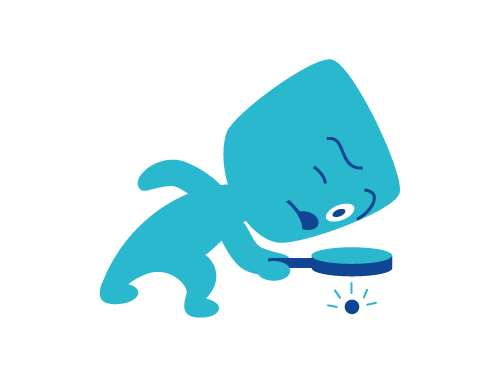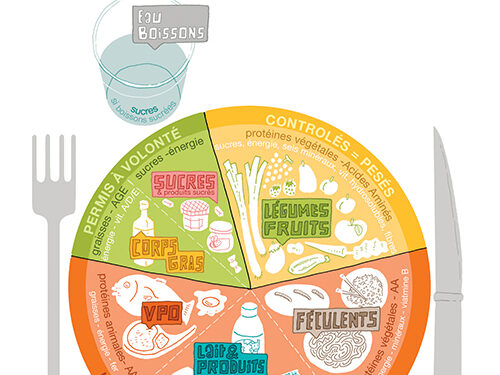Your disease
Biochemical reminder
Your child has a disease called Maple Syrup Urine Disease (MSUD). During your hospital training, you learned that proteins are converted into amino acids in the digestive tract.
In MSUD, 3 amino acids, called branched-chain amino acids, cannot be further catabolised: leucine, valine and isoleucine. This is due to an enzymeAn enzyme is a protein (or in certain cases an RNA) which catalyses (speeds up) a metabolic reaction. deficiency in the second stage of the metabolismThe metabolism is all the chemical reactions of a living organism. It also includes the associated exchanges of energy. of these 3 amino acids.
This enzymeAn enzyme is a protein (or in certain cases an RNA) which catalyses (speeds up) a metabolic reaction. is common for the degradation of these 3 amino acids. The result is an accumulation of the three ketoacids and their corresponding amino acids in the blood, urine and tissues, leading to progressive intoxication (mainly by Leucine) which must be treated rapidly, especially for acute forms.
The frequency of this disease is approximately 1/200,000 births.
MSUD is most often revealed in the first few days of life (acute neonatal form), but more rarely, there are forms of later revelation (progressive intoxication), or even intermittent. Exceptionally, certain forms may be sensitive to treatment with thiamin (vitamin B1).
Your treatment
The principle of the treatment of MSUD is a controlled diet in the intake of these 3 amino acids, thus allowing the body to purify itself of these toxic substances and to limit their formation in order to balance the blood levels in values close to normal.
This balance prevents the occurrence of acute attacks and/or neurological complications. The treatment must be maintained for life. Your child therefore needs a special diet, introduced as soon as possible and covering all his needs. It is therefore ESSENTIAL to learn how to manage his or her diet and to respect it.
Leucine, valine and isoleucine are “essential amino acids”, i.e. they cannot be produced by the body. They must therefore be provided by the diet in order to cover the needs linked to growth and the renewal of the body’s proteins.
The principles of treatment are recalled in the section (“my treatment guide”) and involve:
- Natural foods, which aim to provide the necessary amount of Leucine, Valine and Isoleucine to cover your child’s needs,
- A mix of amino acids, to complete the intake of other essential amino acids,
- Low protein products, which aim to supplement the energy intake in the form of sugars and fats.

Natural foods: how to do it?
All protein-containing foods contain leucine, valine and isoleucine in certain proportions; these three amino acids together make up 25% of animal proteins and 10-15% of plant proteins. Leucine is the amino acidAmino acids are molecules that combine to form proteins. 20 amino acids make up the proteins of the human body. Of these, 8 are essential (our body cannot synthesise them, they must be supplied by the diet): isoleucine, leucine, lysine, methionine, phenylalanine, threonine, tryptophan, valine.
Arginine and histidine are semi-indispensable. In fact, only infants need to take them from their food.
Cysteine, glycine and tyrosine may be indispensable for certain populations with the highest proportion (on average 10% of animal proteins, 5-7% of plant proteins) and, above all, the most toxic accumulation.
The diet will therefore be based on Leucine intake, which will also limit Valine and Isoleucine intake. The foods should be chosen and provided in defined quantities, adapted to each child’s own capacity to use them.
They will therefore be classified into 3 categories:
-
Forbidden foods
Having too much leucine, valine and isoleucine (see the list of forbidden foods given by your health centre).
To give you an idea of what this means and why these foods are prohibited, here are two examples:
- 1 yoghurt provides more than 500mg of Leucine, whereas in the most severe forms of this disease (neonatal forms) the tolerated intakes are usually around 300 to 350mg of Leucine per day!
- Another example: 1/2 a baguette of bread contains 800mg of Leucine, i.e. more than twice the amount recommended per day in the previous example!
-
Controlled foods
Because they contain less leucine, valine and isoleucine and provide the defined amount of these amino acids. They are given in measured quantities and weighed.
The control of the intake is done on the intake of Leucine. In early childhood, the quantity of Leucine (and therefore of Valine and Isoleucine) will be provided by a controlled quantity of infant milk. Then, at the time of diversification (which takes place at a more or less normal age, i.e. from 4 to 6 months, to be adapted on a case-by-case basis), leucine will be provided by fresh, canned or frozen vegetables and fruit.
Lists of vegetables and fruit, whose composition is known, have been drawn up with their equivalence in PARTS of Leucine. By definition, one part of Leucine corresponds to 50mg of Leucine. The food lists will allow you to know the quantity (in weight or volume) of each food corresponding to 1 part of Leucine, i.e. 50mg. These lists will enable you to calculate your child’s diet by checking the amount of Leucine taken at each meal.
You will therefore learn, at the time of diversification, to know the composition of foods and to “choose” from these lists, in order to provide the prescribed daily amount of leucine and satisfy your child’s appetite.
There is a consensus on these equivalence tables, but each centre is free to use its own system.
-
Permitted foods
Because poor in proteins: all fats and sugars.This controlled intake of natural foods allows for a controlled intake of Leucine, Isoleucine and Valine, adapted to your child’s tolerance. Tolerance corresponds to the quantity of these amino acids that allows the body’s growth and protein renewal needs to be covered, without exceeding the elimination capacity of these “excess” amino acids.
“Each child may have a different tolerance (although the variations are not very great), and therefore a different diet from that of another child with Maple Syrup Urine Disease (MSUD). This individual tolerance will be tested during the first few months and will vary only slightly afterwards.”
The prescription of the amino acid mixes
The controlled intake of natural foods will limit the intake of Leucine, Isoleucine and Valine, but will also limit the intake of other essential amino acids, which are not toxic in MSUD but are essential for the growth and development of your child.
It is therefore necessary to supplement the intake of these other essential amino acids to prevent any risk of deficiency. This supplementation is done by prescribing amino acids mixes, containing all the essential amino acids except the 3 toxic ones. This amino acidAmino acids are molecules that combine to form proteins. 20 amino acids make up the proteins of the human body. Of these, 8 are essential (our body cannot synthesise them, they must be supplied by the diet): isoleucine, leucine, lysine, methionine, phenylalanine, threonine, tryptophan, valine.
Arginine and histidine are semi-indispensable. In fact, only infants need to take them from their food.
Cysteine, glycine and tyrosine may be indispensable for certain populations mixes should be taken daily in the prescribed amounts and spread out over the day.


There are a certain number of amino acidAmino acids are molecules that combine to form proteins. 20 amino acids make up the proteins of the human body. Of these, 8 are essential (our body cannot synthesise them, they must be supplied by the diet): isoleucine, leucine, lysine, methionine, phenylalanine, threonine, tryptophan, valine.
Arginine and histidine are semi-indispensable. In fact, only infants need to take them from their food.
Cysteine, glycine and tyrosine may be indispensable for certain populations mixes, with different compositions (more or less energetic), adapted to each age, with different textures, packaging and flavours (they can exist in the form of powder, gel, liquids, in cans, in sachets, in gourds, with natural flavours, vanilla, fruit, etc.). These mixes may seem to have a particular taste or smell, or even be unpleasant, but you can be sure that your child will quickly get used to them, especially if they are introduced from the first days of life, thus becoming part of the “normal” diet for your child.
The choice of the mix will be made according to his appetite, then his tastes, and the quantities prescribed will make it possible to cover all the needs in essential amino acids other than Leucine, Isoleucine and Valine. These essential amino acidAmino acids are molecules that combine to form proteins. 20 amino acids make up the proteins of the human body. Of these, 8 are essential (our body cannot synthesise them, they must be supplied by the diet): isoleucine, leucine, lysine, methionine, phenylalanine, threonine, tryptophan, valine.
Arginine and histidine are semi-indispensable. In fact, only infants need to take them from their food.
Cysteine, glycine and tyrosine may be indispensable for certain populations supplements also provide mineralsA mineral is an inorganic substance present in the human body.
Whether naturally formed or not, the mineral is defined by its chemical composition and the arrangement of its atoms. The term mineral is used when the body of a man weighing 70 kg contains more than 5 g of the element. The main minerals are: calcium, sodium, magnesium, phosphorus, and potassium., vitamins and trace elements to cover needs and are adapted to the age of the child. They also provide energy in the form of fats and sugars, in varying quantities.
During infancy, growth is very rapid and the need for different nutrientsA nutrient is a substance provided by food that ensures the development and maintenance of the body. Proteins, carbohydrates, fats, vitamins, minerals and trace elements are nutrients. is high. The quantities of the mixture will be readapted regularly.
Changes in the diet will also be based on the intake of the 3 amino acids monitored (tolerance), the balance of your child’s plasmaThe liquid part of blood, in which the blood cells are suspended. levels, appetite, growth and clinical condition.
NB: Your child may also be prescribed valine and/or isoleucine ‘capsules’. These serve to avoid a deficiency in one of these two amino acids. Indeed, the controlled intake of Leucine as described above (see “Natural foods”) is responsible at the same time for a restriction in the intake of Valine and Isoleucine, which is sometimes too severe and can lead to a secondary deficiency in these two amino acids. This deficiency is usually detected on blood tests, and may require oral supplementation of these two amino acids.
This supplementation is of course not systematic!
Low protein foods
The diet as described above covers the essential amino acidAmino acids are molecules that combine to form proteins. 20 amino acids make up the proteins of the human body. Of these, 8 are essential (our body cannot synthesise them, they must be supplied by the diet): isoleucine, leucine, lysine, methionine, phenylalanine, threonine, tryptophan, valine.
Arginine and histidine are semi-indispensable. In fact, only infants need to take them from their food.
Cysteine, glycine and tyrosine may be indispensable for certain populations requirements, but is often insufficient in terms of caloric intake. Energy intake must therefore be supplemented with sugars and fats, in the form of low-protein foods. In the first months of life, the amino acidAmino acids are molecules that combine to form proteins. 20 amino acids make up the proteins of the human body. Of these, 8 are essential (our body cannot synthesise them, they must be supplied by the diet): isoleucine, leucine, lysine, methionine, phenylalanine, threonine, tryptophan, valine.
Arginine and histidine are semi-indispensable. In fact, only infants need to take them from their food.
Cysteine, glycine and tyrosine may be indispensable for certain populations mixture (a kind of “diet milk”) usually contains sufficient carbohydrate and fat calories.
During diversification, it is important to gradually introduce “low-protein foods”, whose purpose is to supplement the caloric intake. Because of their variety, appearance and packaging, these low-protein foods also allow menus to be “made” comparable to those of a normal diet. These products can be eaten as much as one likes, as they do not contain any “toxic” amino acids.





